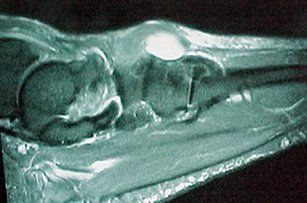Ganglion Cyst
What is Ganglion Cyst?
A ganglion cyst is a sac filled with a jelly-like fluid that originates from a tendon sheath or joint capsule. The word ganglion means knot and is used to describe the knot-like mass or lump which forms below the surface of the skin.
Ganglion cysts are among the most common benign soft-tissue masses. Although they most often occur on the wrist, they also frequently develop on the foot – usually on the top, but elsewhere as well. Ganglion cysts vary in size, may get smaller and larger, and may even disappear completely, only to return later.

Causes
Although the exact cause of ganglion cysts is unknown, they may arise from trauma – whether a single event or repetitive micro-trauma.
Symptoms
A ganglion cyst is associated with one or more of the following symptoms:
- A noticeable lump – often this is the only symptom experienced
- Tingling or burning if the cyst is touching a nerve
- Dull pain or ache – which may indicate the cyst is pressing against a tendon or joint
- Difficulty wearing shoes due to irritation between the lump and the shoe
Diagnosis
The lump will be visually apparent and, when pressed in a certain way, it should move freely underneath the skin. Sometimes the surgeon will shine a light through the cyst or remove a small amount of fluid from the cyst for evaluation. Your doctor may take an x-ray, and in some cases additional imaging studies may be ordered.
Non-surgical Treatment
There are various options for treating a ganglion cyst on the foot:
- Monitoring, but no treatment.
- Shoe modifications.
- Aspiration and injection. This technique involves draining the fluid and then injecting a steroid medication into the mass. More than one session may be needed
When is Surgery Needed?
The lump will be visually apparent and, when pressed in a certain way, it should move freely underneath the skin. Sometimes the surgeon will shine a light through the cyst or remove a small amount of fluid from the cyst for evaluation. Your doctor may take an x-ray, and in some cases additional imaging studies may be ordered.


